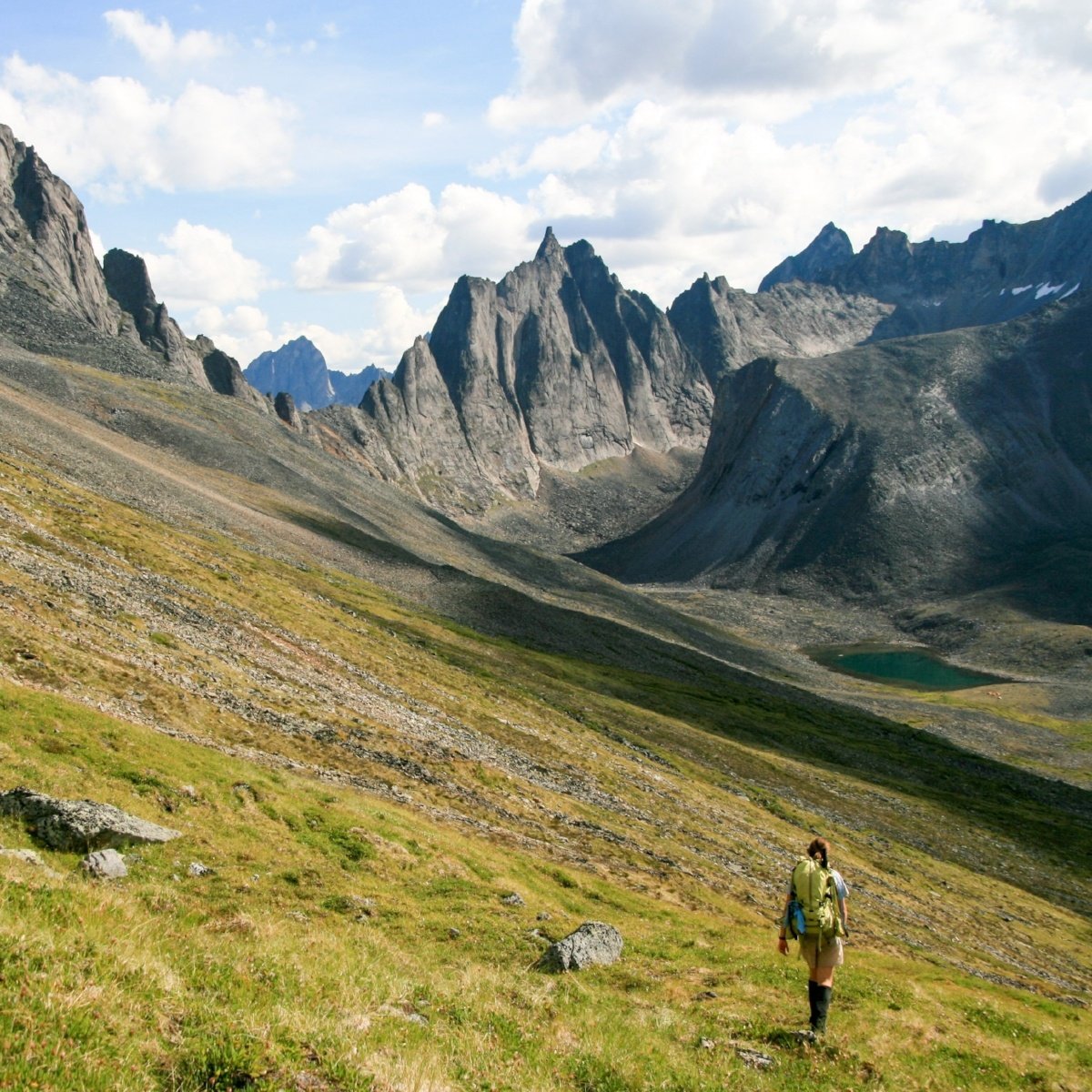The Setting
You’re camping at 8,500’ with a group of 5 friends in the Sierra Nevada in California. It’s mid-summer. One of the group comes over to you and asks if you can take a look at Charley. “He’s having trouble breathing.” You dig into your pack for the first aid kit which you brought along because you, as the Wilderness First Responder trained person in this group, are thought of by your friends as “almost a doctor.”
You haven’t actually seen a patient in the 8 months since your WFR course, but you find your hand coming up to your forehead and the scene-size up comes to mind. You’re momentarily embarrassed and look around to see if anyone noticed, then you get over this silliness, survey the scene, put on your gloves, approach the patient, and perform the initial assessment. You spend an extra moment at the “B” step because the patient’s chief complaint is shortness of breath. You learn he can take a deep breath and there is no chest injury, no dramatic hole you need to plug. The rest of the initial assessment is unremarkable so you take your own deep breath, look at your blank SOAP note, remind yourself of the components of the patient assessment system, and go to work.

Photo by: Melanie Ruth
You sweep the scene for safety and assess that no one is in the water and there are no obvious hazards. There is only one patient who is obviously in pain. You put on your gloves and do an initial assessment. Airway, breathing, and circulation (ABCs) are good. There is no bleeding, spine injury mechanism or apparent injuries. You know the hot environment is a stressor and plan to address that promptly.
SOAP Report
Subjective
Charley is a 20-year old male who is complaining of shortness of breath and chest pain. He says he hasn’t been injured, but that he felt a sharp pain when he was fly fishing earlier and thought it was a pulled muscle. The patient is currently A+Ox4.
Objective
Patient is sitting upright on a log. He can speak in short sentences with pauses to catch his breath. He has obvious labored breathing and states he is anxious and scared. The onset of the shortness of breath was approximately 90 minutes after a sharp upper lateral chest pain. He can walk slowly, unassisted. There are no wheezes, no tingling in hands or mouth, no spasms in hands or feet.
He states he has a tightness in his right chest, and it is more of a pressure sensation than a sharp pain. It is localized, does not radiate. His chest has no sign of injury. His ribs at the site of the pain are not tender to touch. He is not using accessory muscles. There are no retractions.
You are unable to hear breath sounds well enough with ear to chest to learn anything.
No other injuries found.
Vital Signs
|
Time |
1100 hrs |
1120 hrs |
|
Level of Responsiveness (LOR) |
A+Ox4 |
A+Ox4 |
|
Heart Rate (HR) |
72, strong, regular |
72, strong, regular |
|
Respiratory Rate (RR) |
28, shallow, labored |
28, shallow, labored |
|
Skin Color, Temperature, and Moisture (SCTM) |
pale, warm, dry |
pale, warm, dry |
|
Blood Pressure (BP) |
radial pulses present |
radial pulses present |
|
Pupils |
Pupils equal, round, responsive to light (PERRL) |
PERRL |
|
Temperature (T°) |
Not taken |
Not taken |
History
|
Symptoms |
None other than the chest pain and shortness of breath. |
|
Allergies |
Seasonal hay fever. Not a problem at this time. |
|
Medications |
Claritin® as needed for hay fever. Not taken today. |
|
Pertinent Hx |
No medical history. |
|
Last in/out |
Patient is well hydrated, ate breakfast, and states urine and bowel movements are normal. |
|
Events |
Patient was fly fishing. |
Pause here
What is your assessment and plan? Take a few minutes to figure out your own assessment and make a plan.

Photo by Arthur Herlitzka
Assessment
- Shortness of breath
- Possible spontaneous pneumothorax or pulmonary embolism
Plan
- Keep patient in a position of comfort.
- Monitor vital signs.
- Try to keep the patient calm.
- Evacuate as soon as possible.
Anticipated problems
- Shock
- Marked shortness of breath
Comments
A pulmonary embolism occurs when a clot (usually from a leg vein) breaks loose and lodges in the blood vessels of the lung. It can be a hard diagnosis to make. Decreased mobility, lying in a tent waiting out a storm, for example, or long plane flights, may predispose a person to a blood clot. Smoking and a history of recent surgery or illness that keeps the patient in bed are also risk factors. There is an increased tendency for blood to clot at high altitudes. Dehydration, increased red blood cells, cold, constrictive clothing, and immobility during bad weather have been cited as possible causes. The patient complains of a sudden onset of shortness of breath and pain with inspiration. Respiratory distress may develop, including anxiety and restlessness; shortness of breath; rapid breathing and pulse; pale, cool, and clammy skin, and cyanosis of the skin, lips, and fingernail beds; and labored breathing using accessory muscles of the neck, shoulder, and abdomen to achieve maximum effort.
A spontaneous pneumothorax is a congenital weak area of the lung that may rupture, allowing air to leak into the pleural space. The highest incidence occurs in tall, thin, healthy men between the ages of twenty and thirty. Eighty percent of spontaneous pneumothoraces occur while the person is at rest. The patient complains of a sudden, sharp pain in the chest and increasing shortness of breath.
In this case, the well hydrated, active patient without blood disorders or other risk factors is not an obvious candidate for a pulmonary embolism, but we can’t be sure.
If we had a stethoscope we might be able to listen to lung sounds. If decreased on the right side this points to the pneumothorax, but again, we can’t be sure.
What we are sure of is the shortness of breath, inability to do more than walk slowly, labored breathing, and scared patient. We can identify the respiratory distress as a life threat and evacuate the patient promptly.
The Tale Continues
You confer with your friends and come up with an evacuation plan. The soccer-field-sized meadow nearby looks like a good landing zone. You check the location carefully and read the coordinates off the map. A 20-minute hike up the side of the valley gets you a cell phone signal and your call reaches the local sheriff. You were prepared with your SOAP report and location and the dispatcher confirms a helicopter is on the way. This is good since your backup plan is to walk as fast as you can in a group of three to the trailhead phone, leaving two people to care for the patient. You arrange with the dispatcher that you will call back in two hours if the helicopter does not show.
The two hour time limit approaches and your anxiety rises. The patient seems stable: not better, not worse. Charley expresses concern over the helicopter when the faint sound of rotors is heard. Your buddies get set on the landing zone. One has a signal mirror and is able to flash at the helicopter which turns and comes straight into the meadow.
The flight medic listens carefully to your SOAP report, asks a few clarifying questions and thanks you for the written notes and the multiple sets of vital signs you have diligently recorded (Your WFR instructors would be proud). The flight medic confirms diminished breath sounds on the right side, starts Charley on oxygen by mask, starts an IV, and does a few other things. Then you help carry Charley into the helicopter and off he goes. As the helicopter’s whump whump fades into the distance you and your buddies walk around with a dazed look and ask “what’s next?”
End of the Tale
A few hours later you again call the dispatcher and learn where Charley was taken. You call the hospital and they connect you to Charley’s room. He tells you indeed, it’s a pneumothorax, and he expects to be in the hospital a day or two, but all in all he’s doing fine.
Written By
Gates Richards
Gates Richards has been involved in outdoor education and EMS since the early '90s. Over the years he's worked outdoor programming throughout the Rockies, Pacific Northwest and Alaska. He's worked urban EMS in DC, WA, CO and WY. Gates began teaching for NOLS Wilderness Medicine in 1998 and has been awarded the Wilderness Medical Society's Warren Bowman award for contributions to wilderness medicine by a non-physician as well as the National Collegiate EMS Foundation's Distinguished Service Award. He was the former Associate Director and is currently a NOLS Wilderness Medicine Faculty member.




